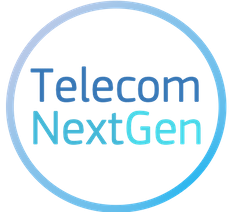Now that the technological storm of MWC has passed, it is a good time to carefully analyze the most important solutions presented in Barcelona and keep an eye on those that will play a key role this year in the telecommunications infrastructure industry.
Behind all the “hype” generated around this annual event in terms of 5G, IoT, AI, one needs to identify the solutions that can actually help operators in their journey to evolve their networks at the same time that they can reduce their OPEX and optimize their investments in CAPEX before 5G is a complete reality.
Open RAN
During MWC we have noticed how some mobile network technologies have left the research phase to start with the production stage of commercial trials. An example of this is the Open RAN initiative which was born under the umbrella of Telecom Infrastructure Project, where, thanks to the support of key operators such as Telefónica or Vodafone and the collaboration of new disruptive companies such as Altiostar, Mavenir and Parallel Wireless, has now become a reality in countries like Peru.
Small Cells and Fix Wireless Access
It has been quite a pleasant surprise to confirm that Small Cells and FWA solutions are having their moment in network deployments.
In the last few years, much has been said about the use of Small Cells in hotspot areas to offload capacity from the macro cells. However, it has not been until now, with the enabling of the CBRS band in the United States, that Small cells are starting to catch operator’s attention. Apart from the solutions presented by the big vendors, which I will analyze later, here we can find the “Apex Small Cells” portfolio of Casa Systems or Airspan’s Air-X indoor solutions.
Boosted by 5G, mmWaves seem to be the chosen bands for FWA deployments. Due to the available bandwidth at these frequencies, together with some innovative radio access techniques designed for 5G, the achievable throughput can compete against the ones provided by current fix access deployments. Companies like JMA Wireless or Intracom Telecom have introduced in this MWC their complete portfolio to cover both fronthaul and backhaul in this emerging use case. Nevertheless, Samsung Networks and Ericsson seem to be one step ahead in FWA thanks to the support of the American vendors.
The big guys and the 5G
As if they were two great fighters, Ericsson and Huawei have shown in this MWC all their 5G potential. Not only have we had the opportunity to see their radio prototypes as in previous years, but this time, they’ve brought a complete end-to-end portfolio of solutions covering the RAN, transport and Core of the 5G network, as well as the bunch of collaboration demos hosted in partners stands.

Focusing on Ericsson, it is interesting to check how actively they are promoting a strategy based on a smoothly switch from 4G to 5G based on software updates with their “Ericsson Radio System hardware has been 5G-ready since 2015” slogan. Well, being honest, this strategy may work for them on a first stage of 5G based on Non-Stand-Alone scenarios considering that nowadays they own a big 4G footprint worldwide in a moment when operators are lacking CAPEX due to the investments made during the last few years. However, once new use cases demand the true benefits of 5G, operators will be forced to migrate their EPC to 5G-Core, their eNBs to CU-DU nodes and their radios to active antenna systems with Massive MIMO and mmWave hardware ready… and here is where Chinese vendors seem to be far ahead.
As I mentioned above, Huawei has struck a blow on the table during this MWC with their technological solutions, covering almost all areas and bringing three big booths for Carrier, Enterprise, and Consumer business groups. Huawei boasts of having signed over 30 commercial 5G contracts with operators around the world and shipped over 40,000 5G base stations. In this edition, Huawei presented their Simplified 5G solutions to quickly deploy 5G networks and the SoftCOM AI solutions to help build autonomous driving networks. But the question is, will Huawei be able to keep leading the 5G race if the USA finally bans them and Europe quits its support?

Regarding ZTE, Nokia and Samsung, it’s good to see ZTE back as if nothing had happened, with a powerful 5G portfolio and with a clear strategy of supporting Stand-Alone deployments. Great also to witness Samsung Networks closing deals in the United States and performing trials in Europe with its FWA solutions at last. And finally Nokia, a sleepy giant who definitely needs to wake up before missing the 5G call.

